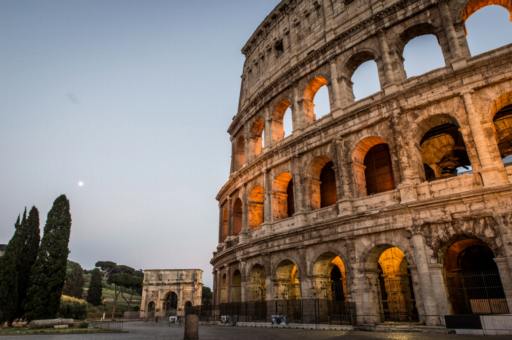Step back in time and immerse yourself in the thrilling world of ancient Roman gladiators at Gladiator School in Rome. Experience the intense training regimen that gladiators underwent, the life and death combat they faced in the arena, and the excitement of chariot racing in the Colosseum. Gain a glimpse into the harsh yet fascinating training methods of these legendary fighters and get a taste of what it was like to live and fight like a true Roman gladiator.

Training Regimen of Roman Gladiators
Training typically began at a young age, with potential gladiators being selected for their strength, agility, and fighting skills. Once chosen, they would undergo a grueling training program that included physical exercise, combat drills, and weapons practice.
Gladiators would typically train for several hours each day, focusing on building strength, endurance, and skill. They would practice with a variety of weapons, including swords, shields, and spears, and were taught how to use them effectively in combat. In addition to weapons training, gladiators also practiced hand-to-hand combat techniques, learning how to grapple, punch, and kick their opponents.
The training regimen of Roman gladiators was not only physically demanding but also mentally challenging. Gladiators were taught to be disciplined, focused, and fearless in the face of danger. They were also trained to work together as a team, as teamwork was essential in the arena.
Overall, the training regimen of Roman gladiators was designed to prepare them for the life-or-death combat they would face in the arena. Through intense physical and mental conditioning, gladiators were able to hone their skills and become skilled fighters, ready to face whatever challenges came their way in the arena.
Life and Death in the Arena: Gladiator Combat
Gladiators, typically prisoners of war or criminals, would be trained in various fighting styles and armed with weapons such as swords, shields, and tridents. The fights would take place in amphitheaters like the Colosseum, where thousands of spectators would watch as gladiators battled each other to the death.
The stakes were high in these fights, with the outcome often determining whether a gladiator would live or die. Some fights were to the death, while others were fought until one of the combatants was seriously wounded. The combat itself was intense and bloody, with gladiators using a combination of skill, strength, and strategy to defeat their opponents.
For many gladiators, the arena was a harsh and unforgiving place, where they were forced to fight for their lives in front of a bloodthirsty crowd. Despite the dangers, some gladiators became celebrities in ancient Rome, admired for their bravery and fighting prowess. However, the reality of gladiator combat was far from glamorous, with many fighters meeting a gruesome end at the hands of their opponents.
In conclusion, gladiator combat in ancient Rome was a brutal and deadly spectacle that served as both entertainment and punishment for those who fought in the arena. The gladiators who faced each other in combat risked their lives every time they stepped into the arena, making their battles a true test of skill, strength, and survival.
Chariot Racing in the Colosseum: The Thrills and Dangers
The races typically involved four-horse chariots driven by skilled charioteers who would compete for glory and riches in front of a roaring crowd of spectators.
The thrill of chariot racing came from the intense speed and skill required to navigate the tight turns and obstacles of the race course. The charioteers would often jostle for position, bumping and crashing into each other as they vied for the lead. The danger of the races was very real, with charioteers risking life and limb in pursuit of victory.
The excitement of chariot racing was heightened by the presence of the wild animals that populated the Colosseum. The charioteers had to navigate around these dangerous creatures while also competing against each other, adding an extra level of danger and excitement to the races.
Chariot racing was not only a test of skill and bravery, but also a source of entertainment for the masses. The crowds would cheer on their favorite charioteers, willing them to victory in the fierce competition. The races were a spectacle of speed, skill, and danger, capturing the imagination of all who witnessed them.
In conclusion, chariot racing in the Colosseum was a thrilling and dangerous sport that captivated the hearts of the ancient Romans. The combination of speed, skill, and danger made it a spectacle unlike any other, drawing crowds from far and wide to witness the excitement of the races.
Gladiator School: A Glimpse into Ancient Roman Training Methods
These schools were found throughout the Roman Empire, but the most famous ones were located in Rome itself.
The training methods employed in these schools were harsh and demanding, designed to turn ordinary men into skilled and disciplined fighters. The gladiators would undergo intense physical conditioning, including endurance training, strength training, and combat drills. They would also learn various fighting techniques and tactics, using a variety of weapons such as swords, shields, and tridents.
In addition to physical training, gladiators were also taught the importance of showmanship and crowd engagement. They were trained to entertain the masses with their fighting skills and theatrics, as the success of the school depended on the popularity of its fighters.
The life of a gladiator was not an easy one, as they faced constant danger and the possibility of death in the arena. However, for many, the allure of fame and glory was enough to endure the hardships of training and combat.
In conclusion, gladiator schools offered a glimpse into the brutal training methods of ancient Rome, where men were transformed into skilled fighters through rigorous physical conditioning and combat drills. These schools played a crucial role in shaping the spectacle of gladiator combat and continue to fascinate historians and enthusiasts to this day.
